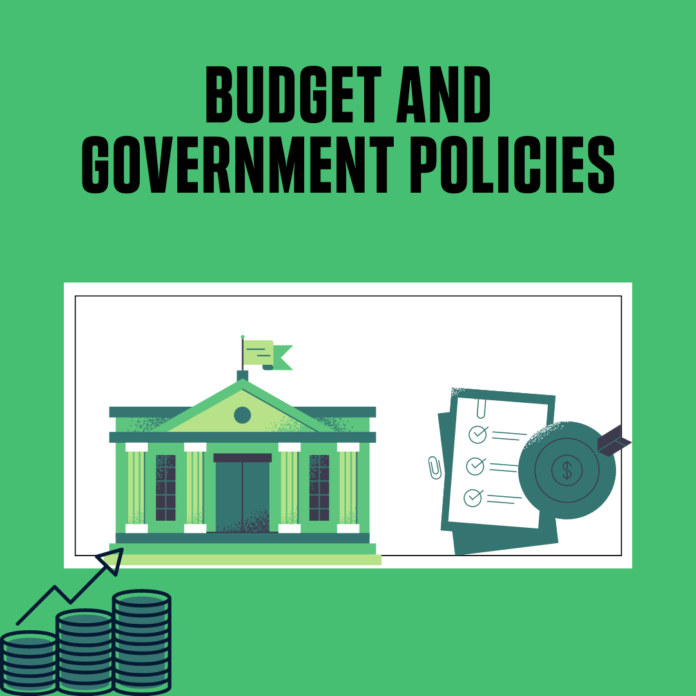Budget is an estimated projection/receipt of the government for the ensuing fiscal year. The government plans and implements different schemes through the budget. Presentation of budget is followed by discussion in parliament. Estimates of expenditure from the consolidated fund are placed before the loksabha in the form of ‘Demand of Grants’. All cash withdrawals from the consolidated fund are sanctioned by finance acts passed by the parliament. Budget can be considered as an annual finance statement. Annual budget presents four kinds of estimates- Actual estimates of preceding year, Budget estimates of the current year, revised estimates of current year, and Budget estimates of the proceeding year. Budget shows expenditure of State and Centre in three heads- consolidated fund of India, contingency fund of India and public account respectively.
These heads cover government receipts from taxes, loans, sum placed for unforeseen expenditure at the disposal of the President, payments in terms of deposits, provident funds by the public. Traditional budgeting follows an expenditure oriented process rather than focusing on the achievement of the objectives. In traditional budgeting future predictions aren’t accurate as it merely follows an extrapolation approach considering previous year values. To eliminate certain uncertainties the concept of Zero based budgeting evolved which relies on achieving objectives and cost benefits analysis extensively. Under zero based budgeting, financial requirements of every department is analyzed and planned thoroughly. In performance budgeting, chosen projects are tested for actual performance against their expected results. This involves stage wise planning and quality assurance at every level. Then there is outcome budget where we translate financial outlays into physical outcomes with measurable parameters to assess the effectiveness of a particular project.
Gender budgeting is a new dimension as it aims to promote gender equality and end gender based disparities both politically and economically. Hence, schemes are planned based on a gender perspective. In India, women lag behind in various sectors such as health, education, employement and economic opportunities, socio-cultural constrictions etc. There is a need to ensure equality in resource allocation. This forms the core objective of gender budgeting. Many states have adopted gender budgeting as a part of their framework. There are different types of requirements for a government to invest such as expenditures on social services, energy, communication, transportation, agriculture, industrial corridor development, rural infrastructure developments, maintenance of existing assets, tourism and ancillary activities, education, information and technologies, space related activities, health, roads, tax collection, interest payments, payments on unfinished assets, civil administration and various other subsidies and developmental goals of the nation.
Sectors that remain the backbone of Indian economy are agriculture, service sector followed by the industrial sector. The worst hit is the agriculture sector as there is a distress in agriculture and a technological gap in this sector. Major part in the farming community continue to be small and marginal farmers with landholding about one acre. Challenges in connecting the producer to the market due to discontinuities in supply chain infrastructure is a major challenge in decline of agriculture sector. Service sector should engage more in creating a self-reliant India with innovative software solutions for nation’s problems. Industrial sector is a major source for generating employment and it should focus on creating indigenous products and spares. These developments are possible only with an effective financial budget.
Let us look at the recommendations of Expenditure Management Commission:
- Rationalization and merger of centrally sponsored schemes.
- Extension of direct benefit transfer across all government subsidies.
- Eliminate distinctions between plan and non-plan expenditures.
- Prevent recording of transactions when they happen irrespective of when the money is paid or received.
- Practice of setting out specific fiscal deficit targets should be done away with in favor of adopting a deficit range.
There are few disadvantages with subsidies, results in unsustainable fiscal deficit, subsidies are paid at the cost of development expenditure, reduces use of traditional inputs which are environment friendly, excessive use of subsidized agro chemicals results in land degradation and harmful health impacts, it distorts cropping patterns, leakages which lead to wastage of government funds. Subsidies should be time bound and must create and encourage capabilities, there should be ceiling per beneficiary, subsidies should not distort resource allocations.
Budget should be in line with the fiscal policy, to mobilize resources for economic growth, to ensure equitable distribution of wealth and income,. The tools of fiscal policy- taxation, government expenditure and public debt come under the ambit and are driven by the budget. The government should encourage direct benefit transfer as it prevents leakages and delays, reduce chances of black money and corruption, reduce government money on bureaucracy, and encourage free and fair market structure, better focus on essential sectors.
The budget should be framed to ensure intended purpose is achieved and it should be a culmination of short term and long term goals. Budget and government policies are tight knitted and compliment each other. Government policies should be in alignment with sustainable development goals and millenium development goals.










